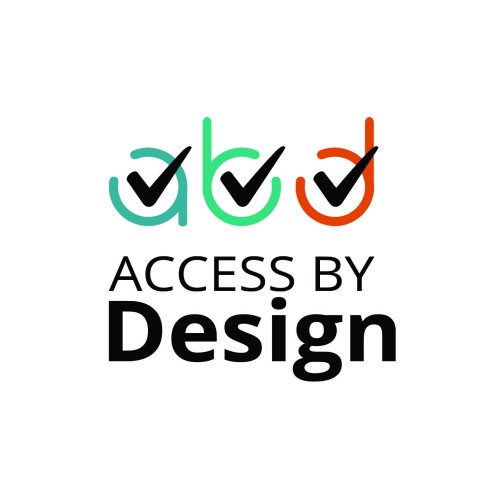Online Accessibility - What exactly is it? How can it benefit my business?

What does ‘accessibility’ mean for a website?
True website accessibility basically means that people with any sort of disability can access your site without barriers such as text being too small, single-format multimedia and complicated site navigation. Those are just a few examples to start with, below is a further summary of the different kinds of people that may access your site and how they are affected by these barriers.
Inaccessible websites are usually designed out of ignorance and are in no way intended to discriminate against users, but they still present huge problems for diversity and equality on the web. Thanks to developments in general awareness however, the question people are asking no longer seems to be, “Should I have an accessible website?” But, “Will I choose to have one?” Read on to discover how important website accessibility is to users with a disability.
What kinds of people can be affected by inaccessible websites? How are they affected?
Somebody with colour-blindness
They cannot distinguish between certain colours. If a site for example states “sale items are in red text” he/she will not be able to ascertain what text is red as it all looks like varying shades of brown. Usually, people with colour blindness find it easier to use websites with high colour contrast and with information on colour e.g. a clothing item being specifically described as ‘green’.
People with colour-blindness can also switch the settings on their browser to increase the contract which allows them to distinguish between colours – however this does not work for websites that do not have compatible coding.
Someone with Repetitive Stress Injury (RSI)
If someone has RSI in their hands and wrists they experience a lot of pain when using a mouse and typing for a relatively short period of time. To overcome this, they prefer to use keyboard shortcuts to navigate through web pages. However not all websites allow this function to work successfully which can often result in extensive keyboard use which is counter-productive for the user.
People with RSI can also prefer to use voice recognition software to dictate their words which spares them from the pain they would experience in typing on a keyboard. It is paramount therefore to accommodate these users that websites are made with these in mind – using appropriate technology in their design.
Someone who is hard of hearing
Someone who is hard of hearing will undoubtedly experience barriers with multimedia (video and audio) that is not sufficiently captioned or is available in text-only forms. If a website uses multimedia, it should aim to address this issue and make sure these formats are available to such users.
Someone with blindness
It may be surprising to know that fewer than one per cent of the two million visually impaired people in the UK are users of Braille. The best figure we have is 18-20,000 – therefore the vast majority who do not use Braille can use screen reader software that interprets what is displayed on the screen and generates speech output, or/and web browser with keyboard support to help use websites without a mouse. When websites are not coded to allow this software to work i.e. when they do not include proper navigation coding and page summaries, these users will have to read every page from top to bottom. This is time consuming as if the user is looking for something in particular – this is very unnecessary.
Someone with dyslexia and/or ADHD
Users who suffer from these conditions have much difficulty reading text, an obvious barrier to some websites that are made predominately with lengthy volumes of text. This is why it is very important to keep the website copy succinct and concise, with clear sections and heading for easy navigation. People with ADHD can often be distracted by movement so a website with a lot of graphics and over-dynamic content would be challenging for these users to stay focused. A website needs to meet the fine line between being bold and clear (eye-catching) without being too distracting and visually overwhelming.
Somebody with low vision and/or hand tremors
For users with these conditions, locating small links and reading small text will prove very difficult. They can use software on their browsers to adjust the screen in order to zoom in to the page – this way they can see the text more easily and select the appropriate links with less difficulty.
However, many websites are not compatible with this technology and it often results in distorted images and text which presents a problem for these users. Problems arise specifically with CAPTCHA images that are used on many platforms, these distorted images of text are intended to tell computers and humans apart, but can be a real barrier for someone with low vision.
Someone with Down’s Syndrome
Somebody with Down’s Syndrome can find abstract concepts and complicated ideas confusing. This is why it is even more important to include clear, simple navigation in websites to accommodate these users.
Epilepsy
Flashing content is very dangerous to these users as it could cause them to have seizures (epileptic fits). It is essential to avoid flashing images/text unless there is a clear warning of that content, it is usually not advisable to use it at all unless absolutely necessary.
This seems a little overwhelming… how do I achieve online accessibility?
That is where Access-byDesign comes in. We are the friendly experts that will design your site to be completely accessible and will encompass all the latest recommended criteria in order to broaden your viewer-base. It is not only in your users’ interests to use an accessible website, but it is also in yours. More customers = more business! If you would like to find out more about what we do, contact us today, we’d love to hear from you. Or you can apply for a free, no-obligation quote by following this link.
Your viewers deserve an accessible website with no barriers or limitations… and so does your business.




